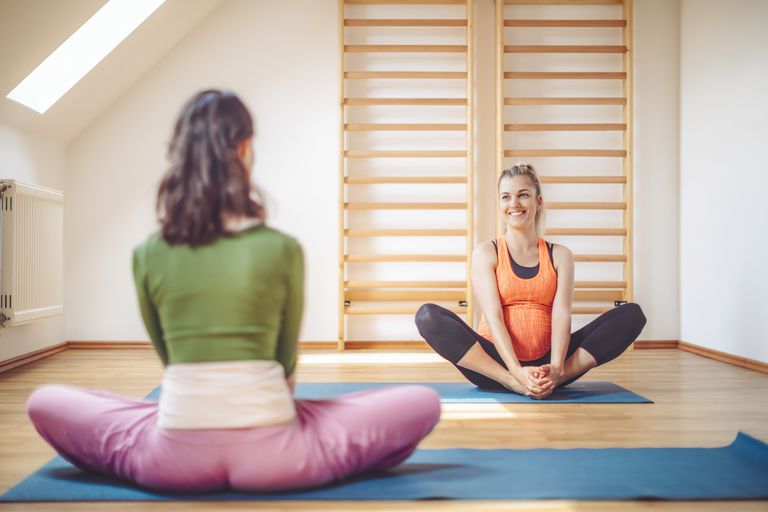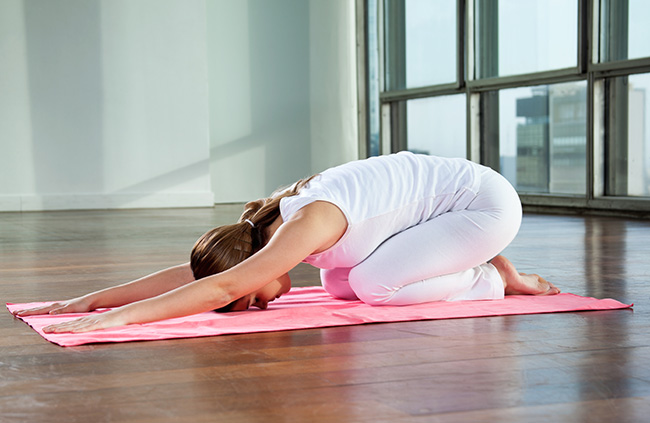Practicing Yoga at home is easier than you think, and accessible for anyone, including those with existing health conditions. Yoga is a disciplinewhere you adopt specific body postures –this works alongside breathing control and simple meditation. It brings benefits including; improvements in health, increased flexibility and all-round body fitness whilst improving relaxation and well-being.
Benefits of Practicing Yoga
Hopefully you are ready to invest the time in yourself and commit to a daily practice. Regular Yoga practice will bring many benefits, both mentally and physically, but you need to turn up and bring yourself to the mat.
To gain maximum benefit you will need to continue your practice regularly, taking that time for yourself every day. You will find though, that if you put the work in your quality of life will improve in tangible ways.
Where do I start?
1. Commit to specific times.
Yoga involves regular practice, daily where possible. The starting point is to commit to a specific time in every day. For most, this is first thing in the morning, but it could be during a lunch hour, or at the end of the day if that suits your routine.
2. Define your space.
To begin with it will help you if you decide where you will practice. As you gain in confidence, and become more independent, you can work anywhere.
3. Follow a guided practice.
There is an almost endless choice of practice to follow, with free resources alongside paid for courses. Guidance online, especially for beginners, is very good and includes videos so that there are no early errors creeping in. For those who don’t have internet access there are DVD’s, recordings, and books available to support your learning.

What equipment do I need?
Yoga is very readily accessible to everyone and as long as you have a flat, firm surface and sufficient space around you then you are good-to-go.Investing in some basic equipment will pay dividends though by supporting you both as you start and alsoas you improve.
The following is a brief summary of equipment that you may like to consider:
Basic Essentials:
· A yoga mat.
A mat is slightly cushioned, and non-slip – you will be practicing barefoot, so it is a safe surface for you to stand or lie on.
· Comfortable shoes.
There are yoga shoes and slippers on the market – which are stretchy, breathable and seamless. Yoga shoes making sure that you aren’t restricted by your feet when stretching.
· Extra Layers and Socks.
At the end of your workout, you will have a short warm down/meditation period, and you can quickly get cold even in a warm room – many people put onanother layer, and warm socks.
Equipment to consider:
· Blankets.
Many people practice with blankets. They can be folded and used as body supports. They are also then of course available during warm-down to snuggle under.
· Blocks.
Blocks are really very useful. They can usually be used in different ways to change height. Blocks can raise the height of the floor, give you support to work from and help to improve posture during poses.
· Yoga Straps.
These are great as you build your flexibility! Straps are supportive where you need to hold your feet when they are too far away at the beginning – and to support you as you lean into poses.
· Bolsters.
Bolsters are similar to blankets and blocks and are used for support.
· Yoga wheels.
A wheel offers a really good way to support yourself and extend your stretch to your limit.
· A mat towel.
To dry both yourself and your mat both during and after practice. It may look gentle, but you will still be working out.
There is a wide variety of equipment available to support your exercise, but Yoga can be started with a very few, well-chosen items.











